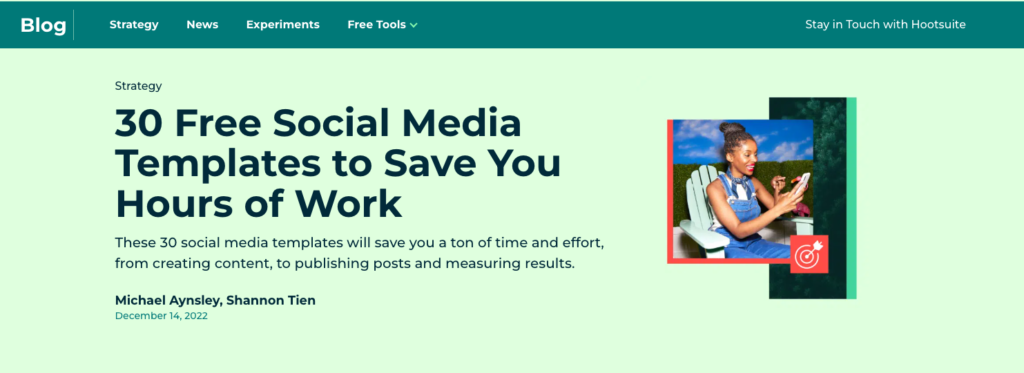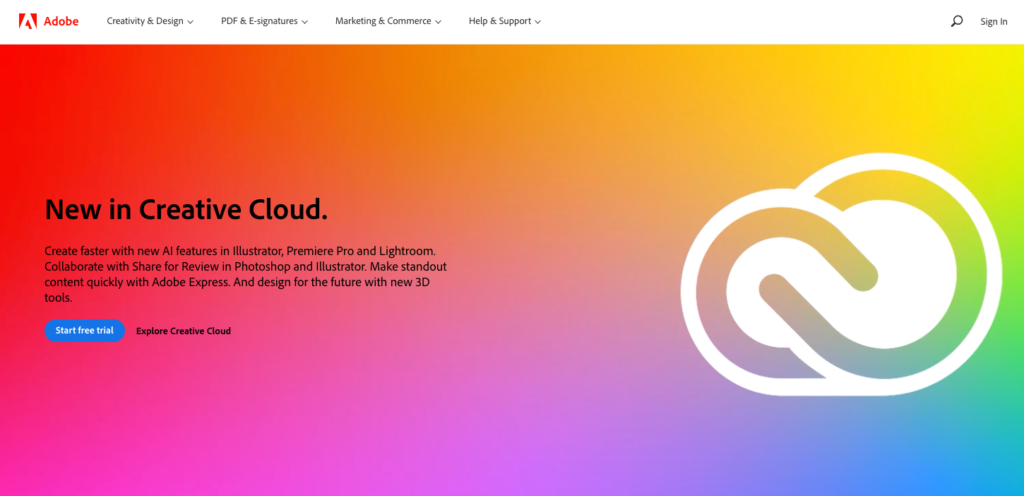Lead Magnets: What Are They & How Can You Use Them?
Table of Contents
Imagine this: You’ve set up your business, got a stunning new website, you’re on every social media platform, and you’re ready to take the world by storm. But there’s just one problem – your inbox is emptier than Tottenham Hotspur’s trophy cabinet (apologies to any Spurs fans reading this, it was the first expression that sprang to mind ?).
So, what do you do?
Sit there and wait for the leads to magically appear? Or do you take action and create a lead magnet that will not only attract new customers but will actually get them to willingly hand over their contact details to you?
Obviously, you’re going to pick the latter.
But you might be wondering, “What is a lead magnet, and how do I create one for my business?”, well stick around and read this blog post because that’s exactly what I’m going to cover!
What is a Lead Magnet?
Lead magnets are tools, resources or offers that you can use to attract your ideal customers to your website or social media profiles.
You encourage them to share their contact info with you in exchange for free stuff like eBooks and guides or access to online training resources and events.
It’s a simple exchange where they get valuable resources to help them reach their goals, and you get their details to send more great content, offers, and product info, slowly nurturing them towards conversion.
Why are Lead Magnets important?
So as I’ve already mentioned, lead magnets help you engage your target audience and nurture them towards becoming customers. But the benefits go beyond just generating more leads.
It can have a bigger impact on your conversion rates, the trust your customers place in your brand and your products, and the quality of your leads, not just the quantity.
Increased Conversion Rates
Lead magnets can influence your conversion rates in a few ways.
When you offer your visitors free tools, resources, and offers, you’re creating a positive brand association in their minds. You’re not like other brands that just spout promotional waffle they don’t care about; you’re the brand that helps them and gives them something of value even on their first visit, and that’ll make them more likely to buy something from you.
Additionally, if you’ve got multiple lead magnets throughout your website, like downloadable guides and resources on different topics, or offers for different product categories, you can gain a better understanding of what specific visitors are interested in.
With that information, you can segment your leads and nurture them by reaching out with tailored resources or information about your products that they’re most interested in.
By segmenting and nurturing your leads like that, you could see a significant increase in conversions.
Build Trust & Credibility
Lead magnets also help you build trust and credibility, both in your knowledge and ability and your product’s abilities.
If you create informational resources like eBooks, guides, templates, checklists, and tutorials, then you’re not just helping people out, you’re demonstrating that you know your stuff.
With things like discount offers or free trials, you’re allowing more people to try your products without having to commit first. This can help potential customers get an idea of how your products work and trust in their potential before buying.
More credibility and deeper trust can lead to more people subscribing to your services and making repeat purchases of your products.
More Qualified Leads
Creating resources your target audience will find helpful will help you generate qualified leads.
Let’s say you’re in the watersports industry and sell Kayaks, Canoes, and other related products across the UK. You could create downloadable resources about the best UK rivers and lakes to go kayaking or a checklist of essential things you need to bring to stay safe while kayaking.
By creating and marketing resources that attract and provide value to your ideal customers, you will see more qualified leads coming through the door.
Different Types of Lead Magnets
So, we’ve gone over what lead magnets are and why they’re important, and I’ve given you a few examples already.
But here are some specific examples of different types of lead magnets.
eBooks
If we’re talking about lead magnets, I’ve got to mention HubSpot.
They’re well-known for their helpful free resources covering various marketing, sales, and customer service topics, and they know how to leverage these to generate leads for their platform.
Although they offer a load of resources like templates, guides, and courses, their eBooks are some of their most in-depth and valuable lead magnets.
For example, if you’re new to the world of coding, you can take a look at their ‘Ultimate Guide to Java & Javascript for Beginners’; if you’re looking to step up your social media game, they’ve got eBooks around engaging with your audience on Facebook, and tips for using Instagram for business.

Look at that Java & Javascript eBook page, and note how they’ve laid it out.
They show the eBook’s cover, a very noticeable ‘Download Now for Free’ button, a list of what you’ll gain from it, and a little excerpt from the eBook.
Also, their download form only asks for the information they need to understand who you are and your needs. They don’t ask for your phone number, address or any other information, only what they need.
Only asking for the information you need to nurture your leads means your audience will be less hesitant to hand over their details because they’ll only be handing over basic information about themselves in return for a lot of value.
Templates
Hootsuite is another excellent example of a digital marketing platform that nails its lead magnet strategy.
With their platform allowing users to schedule social media posts in advance and track metrics and performance, they offer a load of free templates geared towards improving your social media strategy.

Looking at their list of social media templates, you can see they’ve covered nearly every need and basis their customers focus on, like strategy planning, auditing, and buyer persona templates.
Notice that the resources they’re offering don’t step on the toes of their platform. They haven’t created resources like ‘How to schedule posts on Twitter using Tweetdeck’ because that won’t help them generate leads.
Instead, they’ve created resources that’ll help their customers improve their social media strategy in the planning and creation stages, and they make sure to call back to their product and demonstrate the value it can provide for publishing on social media.
Reports & Audits
Offering free audits and reports is a great way to generate leads, and for this example, I’m going to toot Damteq’s own horn for a minute.
One of our core services as a Growth Marketing Agency is SEO. But a lot of the time, businesses come to us not realising how bad their performance actually is. So, we built a free SEO Audit tool that can give our visitors a 100-point SEO report on their website in seconds.

This helps our visitors by giving them a free comprehensive report on their website performance, and in exchange, we receive their contact details to allow us to follow up with a phone call and see if they need any help optimising their website.
So, if you want to know how well your website performs and the areas you could improve, go ahead and get your free SEO audit by clicking on the link above. ?
Webinars
Running webinars and other online events is a great way to attract and generate leads, and a company I’ve worked with in the past absolutely nailed this part of their strategy.
They were a legal firm that focused on transport and environmental law, and at the start of the pandemic, they began running weekly zoom sessions offering free legal advice to companies that were confused with all the changing rules and regulations brought on by COVID.

What started as weekly sessions to help out their existing customers and other road haulage/waste management companies turned into a great way to generate leads for their legal retainer packages.
After creating some landing pages for them and putting a big focus on the promotion of the weekly sessions via email marketing, I helped them generate an extra 10 to 15 qualified leads a month on average.
The takeaway is that if you want to use webinars and online events to attract more customers, focus on being helpful and providing as much value as possible to your potential customers.
Free Trials
Free trials are probably the most common type of lead magnet you’ll encounter online.

Almost every online subscription-based service will offer a trial to users because it helps them build trust and confidence in their products and gives their potential customers a risk-free way of trying them out.
So many brands offer trials, including:
- Adobe
- Spotify
- Semrush
- NOW TV
- Amazon Prime
If they love the product, they’re likely to go onto a paid plan at the end of their trial. If they’re not too sure and can’t justify the price, then you can reach out to them and offer them a trial extension or a small discount to sway their decision.
If they didn’t like the product, you could use the feedback to improve your product or adjust your targeting to ensure you’re attracting the right customers.
Either way, it allows you to attract and convert more users and continuously improve your product or service.
How to Create a Lead Magnet
Depending on the type of lead magnet you’re looking to build and the wants and needs of your target audience, there are a load of different ways to create your lead magnets.
But here are the main stages you’ll need to follow to create some of the most common lead magnets like eBooks, guides, templates, and other content-related resources.
Audience Research
You might know who your ideal customer is and the typical problems and challenges they face, but you need to go beyond that and look at what they’re actually searching for if you want to create resources that they’ll find helpful.
Reach out to your existing customers and ask them what they want to see. Do some research on social media to see what type of content your ideal customers are interacting with and what sort of information they’re looking for.
By getting a deeper understanding of what they need and want to see, you’ll be able to create more relevant lead magnets to capture your customers’ attention and their contact details.
Keyword Research
Once you know what your customers want to see, you need to look at the keywords they’re using to find it.
Let’s say you run a home improvement retail company that sells materials and tools to consumers doing DIY work at home; you need to look at the specific keywords around DIY and Home Renovation that your customers use to search for information, resources, and products.
Here are a few potential keywords that your customers are using to find info and resources around that topic:
- ‘DIY on a budget’ – 320 monthly searches – 32% keyword difficulty
- ‘Home renovation ideas’ – 140 monthly searches – 64% keyword difficulty
- ‘DIY tips and tricks’ – 70 monthly searches – 28% keyword difficulty
Looking at those keywords, they’ve got a pretty good amount of monthly searches and, most importantly, the right search intent. Here are a few resources that you could create based on those search terms:
- The Ultimate Guide To Doing DIY On A Budget
- 20+ Simple, Yet Brilliant Home Renovation Ideas
- eBook: Essential DIY Tips and Tricks For Beginners
Take some time to look at your customers’ searches in your industry, the average monthly search volume, and the keyword intent.
Don’t get too caught up on the search volume, though, because while it’s important to get an idea of the demand for information, you can promote your resources and reach wider audiences through social media, email marketing, and advertising.
Content Creation
When creating the actual content for your resource, there are a few essential things you need to bear in mind.
Providing value
I know I’ve mentioned the ‘V’ word a lot throughout this article, but that’s because value is absolutely essential for creating lead magnets that work.
Your resource needs to offer a solution to a problem your audience is having or provide information that can help them achieve their goals. If your lead magnet offers real value, your customers will be more likely to engage with it.
Without the necessary level of value, people in your audience will likely be disappointed after downloading the resource, or they just won’t download it in the first place!
Keep it simple
There’s nothing more frustrating for your audience than finally finding a resource that’ll explain the remedy to their problems, only to find it’s full of jargon, or is so complex they can’t understand it.
Lead magnets should be part of your top-of-funnel strategy, which means you’re targeting people in the initial stages of learning or researching.
You should avoid overwhelming your audience with too much jargon or complex concepts. Keep your resources simple, clear, and actionable.
Make it visually appealing
Another big that helps catch your audience’s attention and encourage them to engage with your lead magnets is the visual design.
Make sure you’re using a simple but eye-catching design for your resources, and use additional visuals like graphs, charts and graphics to help illustrate your points and visualise data.
Deliver on your promises
Make sure you deliver on what you’ve promised in your title and resource description. If you’ve promised to provide a certain level of value or specific information that isn’t in the resource, you’ll damage your customer relationship before it’s even begun.
Don’t clickbait, and don’t give them a basic resource they could’ve found elsewhere. If they’re going to be exchanging their contact details for the resource, then make it worth their while.
Landing Pages
Even if you’ve spent weeks perfecting your resources and they are packed with value, it’ll all be for nothing if your landing pages are poorly structured or designed.
For your lead magnet landing pages, you need to make sure the title is clear, clearly explain the value and what your audience will get out of downloading your resource, and place a clear and encouraging call-to-action and the very top of the page and throughout the page content at relevant points.
If you need help creating your landing pages for your lead magnets, then you can get in touch, and our UX and SEO teams can lend a helping hand and optimise your pages for search, user experience, and conversions.
Promotion
Once you’ve created your lead magnet and a well-structured landing page, you need to get the word out and proactively market that resource.
Don’t rely on the old belief of ‘build it and they will come’; you need to actively promote and drive traffic to your lead magnets to make them worthwhile.
Make sure you’re using all the channels available to you, like social media, email marketing, and targeted PPC campaigns, to promote your lead magnet and drive traffic to that landing page.
If you don’t do this extra promotion and rely on organic traffic to bring in those leads, you’ll see less success with your lead magnets.
